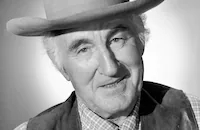Red Dust was based on a play by Wilson Collison that had originally been purchased as a possible film vehicle for John Gilbert. Although the former matinee idol was still under contract to MGM and in need of a hit, the studio brass decided to cast Gable in the role instead, believing Gable and Harlow a better match than Gilbert and Harlow. At the last minute, they replaced French director Jacques Feyder with Victor Fleming but other than that, production proceeded smoothly until a major scandal threatened to shut down production. Jean Harlow's husband, MGM executive Paul Bern, committed suicide midway through filming (some biographies suggest he was murdered and the studio covered it up) and MGM mogul Louis B. Mayer, fearing a scandal, appealed to Tallulah Bankhead to step into Harlow's role. She refused out of respect for Harlow and the blonde bombshell was soon back on the set, though considerably subdued. During her first day back at work, Fleming reportedly said to Mary Astor, "how are we going to get a sexy performance with that look in her eyes?" But Harlow proved herself the ultimate trooper, turning in a delightful performance. When Time Magazine covered the film, the reviewer wrote: "The best lines go to Harlow. She bathes hilariously in a rain barrel and reads Gable a bedtime story about a chipmunk and a rabbit. ("Say I wonder how this comes out?" her character wisecracks). Her effortless vulgarity, humor, and slovenliness make a noteworthy characterization, as good in the genre as the late Jeanne Eagels' Sadie Thompson."
Surprisingly, Red Dust avoided any censorship problems with the Hays Office, despite the carnal relationship between Carson and Vantine or the passionate kissing scene between Carson and Barbara during a rainstorm. The latter, in fact, was particularly difficult to film because of the intense heat on the set. The hot lights would instantly vaporize the water on the actors' clothes and produce a mist effect that was NOT what the cameramen wanted. To avoid this, prop man Harry Edwards would heat water in a teapot and then pour it on the actors prior to filming.
Co-star Gene Raymond agreed it was a difficult picture to shoot and said, "...the whole thing was done at MGM. Stage 6 was now a jungle with a hut in it, and it stank to high heaven. The rain would seep in and all of a sudden you had mud. Then they put the hot lights on and it steamed up. So it was not a pleasant picture; it was hard for everybody, especially the crew." Regardless of the hardships, Red Dust was a hit and would later inspire a remake - Mogambo (1954) - directed by John Ford and with Gable repeating his original role opposite Ava Gardner (in the Harlow part) and Grace Kelly (in the Astor role).
A final bit of trivia: Jean Harlow would later marry Harold "Hal" Rosson, the cinematographer on Red Dust.
Producer: Victor Fleming, Hunt Stromberg
Director: Victor Fleming
Screenplay: Wilson Collison (play), John Lee Mahin (as John Mahin), Donald Ogden Stewart (uncredited)
Cinematography: Harold Rosson
Costume Design: Adrian
Film Editing: Blanche Sewell
Principal Cast: Clark Gable (Dennis Carson), Jean Harlow (Vantine), Gene Raymond (Gary Willis), Mary Astor (Barbara Willis), Donald Crisp (Guidon).
BW-83m. Closed captioning.
by Jeff Stafford































